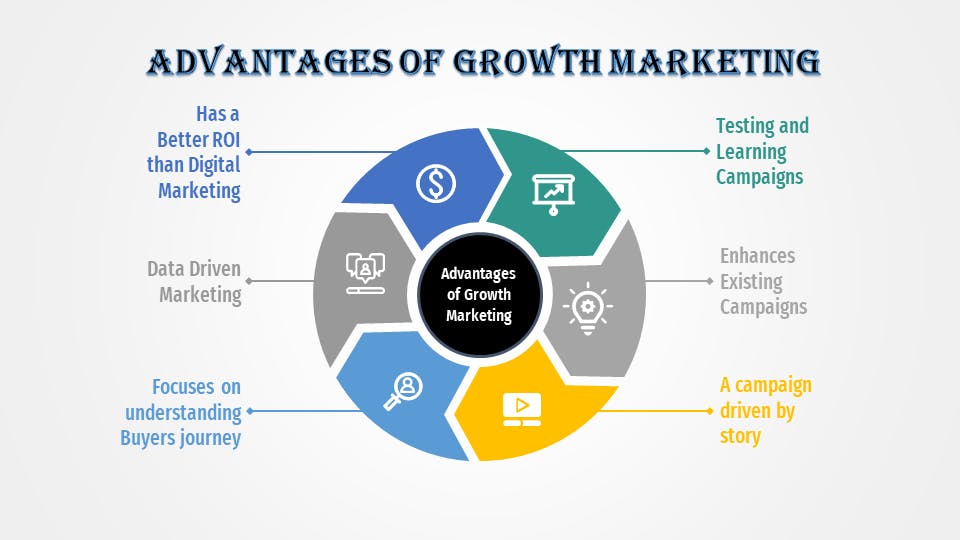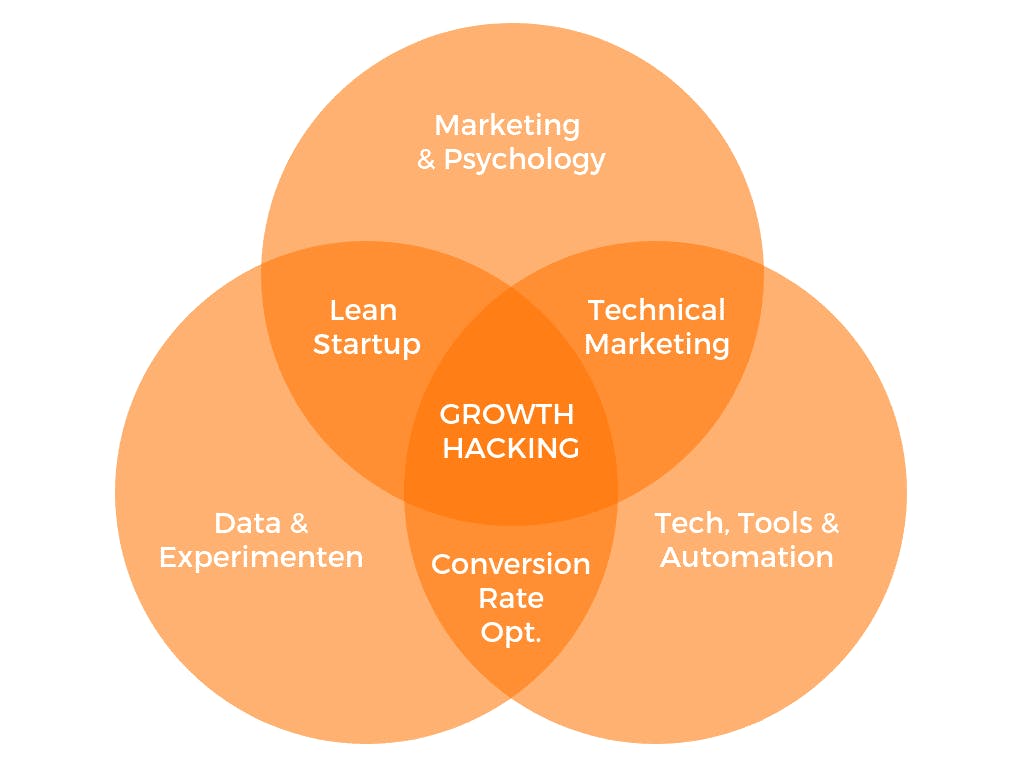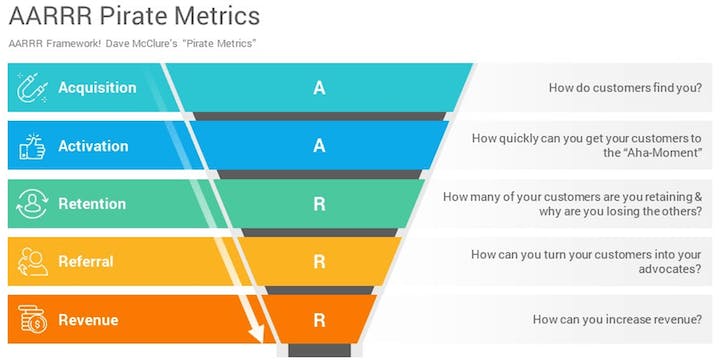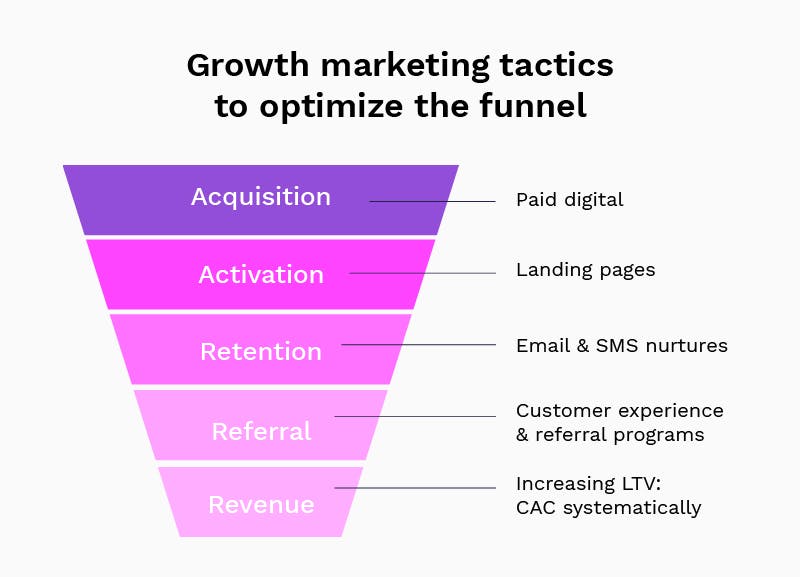What is growth marketing: strategy and its components
Oct 4th, 2022

Contents
What is growth marketing?
Growth marketing strategy and its components
How to transform your marketing into growth marketing?
Over the last decade, growth marketing is no longer a trend but an approach that helped redefine the goal of marketing. In the modern startup environment, growth marketing becomes a vital necessity as it helps determine the best way of scaling a business and achieving successful results. Nowadays, effective marketing is not just about generating leads at the top of the funnel but a way of attracting consumers and building long-term relationships with them. The key focus of growth marketing is customer retention.
Growth marketing allows businesses to constantly try new ideas, gain valuable insights, and change products and strategies to suit customer needs better. Instead of concentrating on acquiring new customers, growth marketers think of methods to increase loyalty and keep existing customers longer. The approach provides the opportunity to analyze your entire customer lifecycle and apply the gathered data to attract a more engaged audience and generate returns. Growth marketing is a great way to strengthen your marketing efforts and fine-tune the strategies over time to achieve impressive results and get more conversions and higher customer lifetime value.
What is growth marketing?
Growth marketing is an evolutionary approach that aims to find the perfect way for business development through experimentation and testing. It combines traditional marketing strategies with data-driven and scientific methods that involve hypothesizing, testing the assumptions, and refining or rejecting them. Growth marketers widely apply search engine optimization, value-added content, cross-channel marketing, technical analysis of user experience, and other methods to generate long-term and sustainable growth. The approach uses data gathered through promotional campaigns and experimentation to improve marketing campaigns.
The term “growth marketing” comes from the term “growth hacking”, initially used by Sean Ellis to explain how fast-growing startups like Airbnb attract and retain customers by employing innovative and low-cost techniques. With the development of marketing technology, growth marketers began to apply more sophisticated methods. In essence, they shifted the attention from growing the larger pool of customers in the short term to building relationships with a highly engaged audience. They also concentrated on reducing churn and increasing the lifetime value of each client.
Today growth marketers focus on the entire customer journey instead of paying attention only to the top of the funnel. Marketing specialists develop a go-to-market strategy, try various channels and constantly optimize the processes to attract, engage and retain customers at lower costs as quickly as possible. Thus, growth marketing strategies always have the element of randomness as some techniques might work while others might fail.
At the same time, marketers conduct experiments with the content intended for different user segments by applying A/B testing and multivariate testing. Then, they use the results to create highly optimized strategies for each segment and target individual customers. A personalized approach allows for providing excellent customer service, delivering valuable content, and as a result, generating higher client satisfaction rates and building long-term loyalty. Now we will consider the differences between growth marketing and traditional marketing.

Growth marketing vs traditional marketing
The main difference between growth marketing and traditional marketing is the final goal. Traditional marketing prioritizes acquisition, while growth marketing primarily focuses on client retention. Unlike conventional marketing, which attempts to turn a lead into a customer as soon as possible, growth marketing aims to guide a person through every stage of the sales funnel and, finally, build brand advocacy.
Traditional marketing often encounters two problems: the lack of cross-collaboration between departments and difficulties in measuring results. Let us consider the first problem. Companies often organize teams according to the stages of the sales funnel. The marketing department is responsible for raising brand awareness and generating interest; the sales team’s duty is to convert leads into customers; the product team is in charge of building loyalty. Due to the lack of collaboration and communication between departments, the teams often miss the opportunities to benefit from each other’s experiences and use the findings to optimize marketing campaigns. For instance, the typical objective of a marketing department is the number of leads. If a marketing team attracts low-quality leads, that will harm the overall company’s performance as it will be difficult to convert them into customers.
The second problem faced by traditional marketing concerns measurement difficulties. Marketers aim to generate maximum awareness, but often they do not have a clear understanding of the actual outcomes. Traditional platforms like magazines or TV do not allow companies to track the success of campaigns and quickly analyze metrics. Moreover, marketing campaigns may be quite lengthy. Many large brands launch one or two campaigns per year. Growth marketing, in contrast, applies scientific methods which are testable, scalable, and trackable. Specialists generate experiment ideas, conduct controlled tests, gain insights, eliminate or redirect resources, and create enhanced products.
Growth marketing vs growth hacking
The terms growth marketing and growth hacking are not interchangeable. Growth hacking is used to describe early-stage startups that require fast growth with a limited budget. Sean Ellis provides the following definition of the concept: “a rigorous approach to fueling rapid market growth through high-speed, cross-functional experimentation.” The goal of growth hacking is to attract a large number of customers within a short time.
The hacking approach implies growth by using any available means without paying much attention to a brand. In contrast growth marketing focuses solely on developing the brand’s story, value, and customer base. Thus, growth marketing is a broader concept that refers to increasing the audience by testing various channels and offering excellent customer service throughout the funnel. Growth hacking, in contrast, involves implementing a specific strategy on a particular channel or making changes to a product to acquire new customers.

Growth hackers strive for quick results, whereas growth marketers aim for long-term success and sustainable growth. Growth hacking studies data to uncover patterns and improve outcomes, whereas growth marketing examines data to identify patterns and modify strategy. The other difference lies in techniques used by growth hackers. They mostly rely on technical skills and analyze business pain points. Growth marketers are experts in conducting and interpreting qualitative customer research to diagnose client problems. Thus, growth marketers are customer-oriented business strategists who focus on people and competition.
Now let us discuss how to develop a growth marketing strategy that helps you achieve your marketing goals.
Growth marketing strategy and its components
Growth marketers choose specific metrics and then experiment with them to change business for the better. Further, we will discuss the techniques growth marketers use to attract, convert and retain interested customers and provide a list of essential metrics that would impact your company.
Set goals for each area
Each successful strategy requires clear objectives and measurable key performance indicators. As growth marketing involves a wide range of tactics, your team will not be able to handle them all. Thus, you need to choose the most crucial areas and define goals using the SMART method of objective setting. For example, you can concentrate on improving the conversion funnel for first-time website users, growing your customer base, or increasing the customer acquisition rate.
Determine key performance indicators
Then you need to choose several KPIs and measure performance with CRM software and built-in social media and website applications. We can categorize the critical metrics according to the sales funnel stages. Acquisition, activation, retention, referral, and revenue are the five user-behavior metrics that growth businesses should be tracking, according to the AARRR Pirate Metrics framework. Let us take a closer look at each category.

Awareness metrics include website traffic, impressions, click-through rates, social media likes, shares, comments, and user behavior on a website. Acquisition KPIs are the following: the number of leads generated in a given time, the percentage of users who convert into customers, the cost of acquisition, and the email click-through rate. Activation metrics include time spent converting a lead into a customer, the number of sales generated within a given time, and repeat customers. Key performing indicators of revenue can be measured through average deal size, monthly recurring revenue, and revenue per user. Retention metrics are customer satisfaction rate, customer lifetime value, and customer churn. Finally, referral KPIs include net promoter score, social media shares, and conversions from customer reviews.
Plan the experiment
Once you have identified the areas and metrics you want to improve, you need to plan the experiment. The first step is to put a question. For example, your website attracts about 1,000 visitors per week, but only 50 ask for more details. In this case, the question would be: What is going on with the other 950 people, and why are they leaving the website without taking action?
Try testing one thing at once. If you include more variables, it will be challenging to determine the reason for your results. When conducting the experiment in one area, wait until it is finished before beginning the next test.
Conduct research
The following step is to conduct background research. Determine the types of buyer personas who are not converting into customers. You can run surveys or use focus groups with existing or potential customers to understand their needs and motivations. At this stage, you will be able to determine a deadline, plan your marketing budget and clarify the goal.
Your team should collect data related to every aspect of customer experience. This implies that digital marketers, data scientists, and engineers should collaborate to implement accurate tracking on websites, mobile apps, POS systems, email marketing, and consumer databases. After you have set up proper monitoring, you need to integrate several sources of user data to create a thorough and accurate picture of user behavior that your data team can examine. Finally, you need to create a data warehouse which is a single site where you store all of the information about your customers and where you can find various groups of consumers who differ from the others.
Develop a hypothesis and check your assumption
Then you need to form the hypothesis and consider the actions you can take to change the situation. Members of your marketing team can suggest ideas for improving the focus area. The ideas are rated according to the ICE Scoring Model that estimates Impact, Confidence, and Ease of Execution.
You can assume that some visitors leave after making a one-time purchase. This could signify that you should improve customer acquisition, nurturing, and retention methods. Then run an experiment based on your hypothesis. For example, you have decided to use more personalized messaging to increase acquisition rates among your customer personas. Finally, analyze the results. You might find that acquisition costs decreased by 50% when you started using personalization and addressed customer pain points instead of applying blanket marketing.
Implement A/B testing
Testing is one of the most effective tactics of growth marketing. With A/B testing, you can analyze the behavior of your target demographic and try different approaches and messaging. In addition, this method allows for testing a specific marketing strategy, channel, or content type and helps determine which option performs better and why.
For example, you can use two alternative photos or titles to promote a social media publication. Then you need to monitor the campaign to discover which version showed better results. After that, you can compare the high-performing ad with the other variant and continue A/B testing until you achieve the best possible outcome. With each round of experiments, you will get closer to the best version that provides you with the desired performance.
A growth marketing experiment aims to change a key performance indicator that impacts your overall metric area. If the results of your experiment enhanced your company's performance in that area sufficiently, you can return to step one and choose the next area for development.
How to transform your marketing into growth marketing?
Successful growth marketer understands that the basis of growing your business is addressing buyers’ needs at every stage of the funnel. Consequently, it is critical not to lose sight of the entire customer journey while taking the following steps that we will describe below.
1. Create a cross-functional team. A growth marketing team is more than a group of people with marketing skills. You should create a team that can handle every aspect of the sales funnel. A perfect growth marketing team consists of a growth lead, product manager, software engineer, marketing specialist, product designer, and data analyst.
2. Increase the number of channels. If you use only one platform, your growth marketing strategy might fail. It would be tough to see the entire customer journey and reach a wider audience. You can collect more data about your customers by including a variety of advertising and marketing channels in your marketing mix.
3. Adapt your content to different channels and audiences. When you use various platforms, you need to create tons of content to support your activities. You can transform the existing content and repurpose it by changing the format or adapting it to the needs of different audiences. For example, you can turn an article into an infographic or transcribe a video into a publication.

4. Maintain active participation from your customers. Make it possible for your customers to interact with your brand. Use polls and surveys to engage users on social media, build customer community, and respond to client feedback and suggestions as soon as possible.
5. Study trends. You can constantly try new growth marketing tactics and experiment with various marketing channels and digital tools. For example, try chatbots, live-streaming videos, mobile ads, geo-fencing, or advanced AI-based targeting platforms to see which tool works best.
You can hardly achieve outstanding results by repeating the same actions again and again. Instead, keep experimenting, formulating new hypotheses, and confirming or disproving them. Some of the experiments will not yield the desired results, but you can apply the gained knowledge to conduct the next tests that can lead to more successful outcomes.
